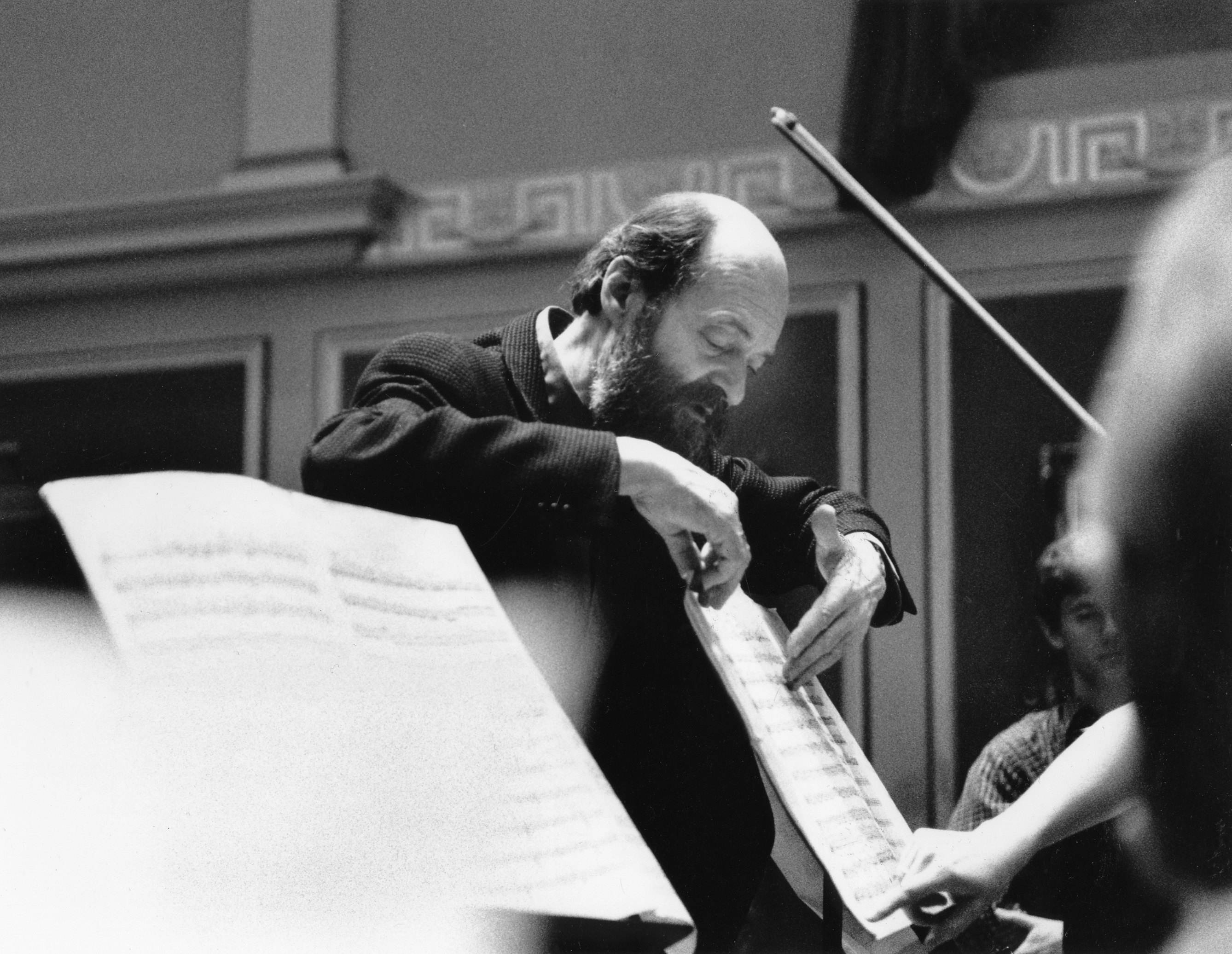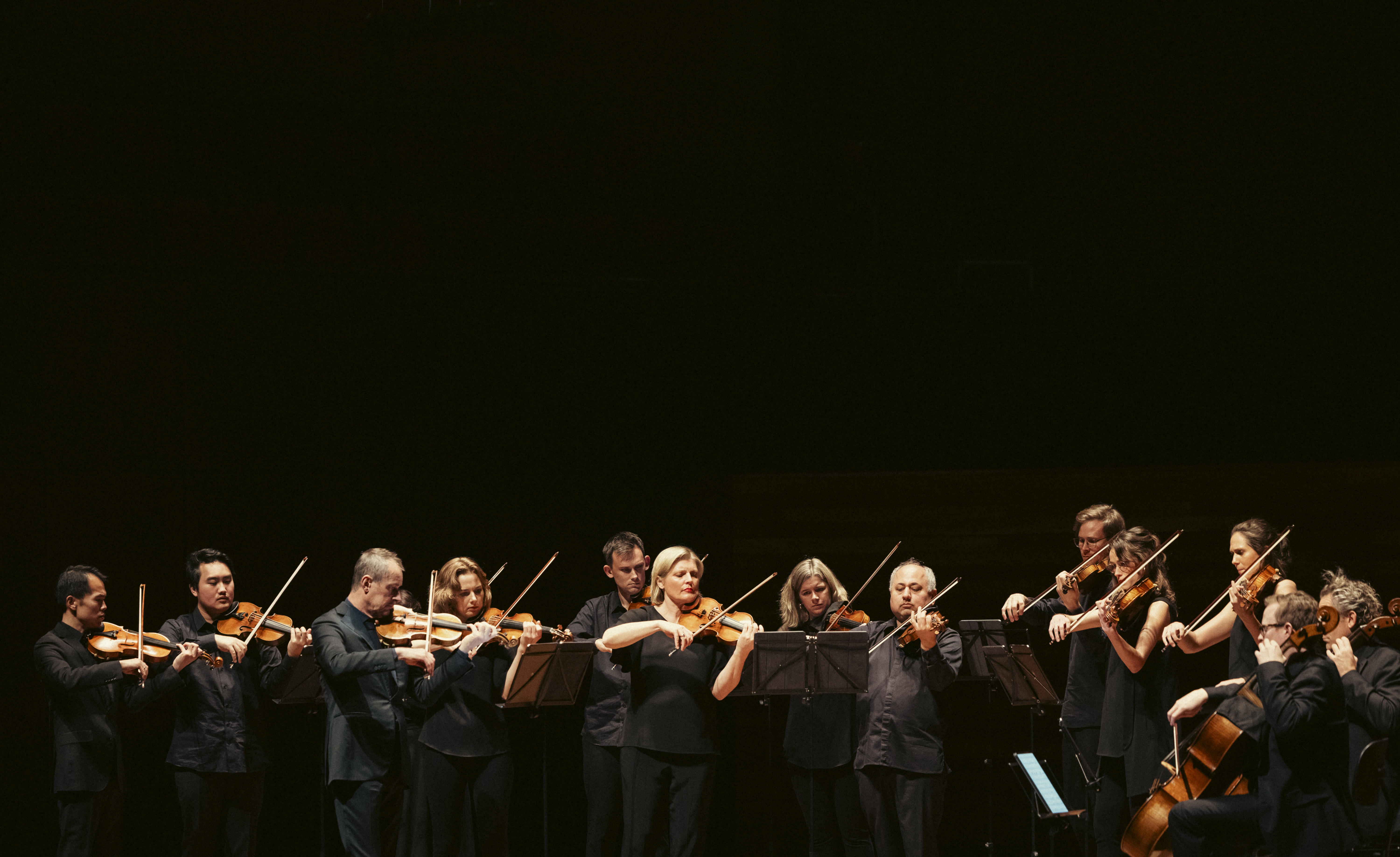
By Rosie Pentreath
Arvo Pärt is an Estonian composer of contemporary music, known for his ‘tintinnabuli’ style of minimalist composition.
He first gained recognition as a composer in the 1960s and had a reputation as one of the leading figures in the Soviet avant-garde movement.
After composing his breakout work, Credo, in 1968 Pärt entered a creative hiatus, replacing hours bent over scores with a renewed focus on his faith. He joined the Orthodox Church and immersed himself in Gregorian chant, the Notre Dame School and classic vocal polyphony. He didn't share a new composition with the world for eight years.
He came out of these years of quiet soul searching with his new ‘tintinnbuli’ style, and soon produced many of the works that would make him famous, including Für Alina, Cantus in Memoriam Benjamin Britten, Fratres, Tabula Rasa and Spiegel im Spiegel.
Here are some of his greatest and most loved works.
Read more: Music by Arvo Pärt and JS Bach featured in our Silence & Rapture tour
Fratres (1977)
One of Pärt’s best known works, Fratres (meaning “Brothers”) was composed in 1977 and belongs to the group of pieces that firmly established the principles of his ‘tintinnabuli’ method of writing music.
‘Tintinnabuli’ roughly translates as ‘a bell’ and evokes if not a technique, an essence and style of composing in a still, resonant and very beautiful way that ultimately produces existential and deeply spiritual music. Pärt’s Für Alina and Tabula rasa are written with the same essence.
Fratres can be performed with any combination of instruments, but in the version for solo violin and orchestra, the soloist is challenged to perform passages requiring the utmost dexterity and intention – from the swirling, rhythmic arpeggio patterns of the opening, to some moments that call for more forceful strokes with the bow – while the undercurrent of the orchestra is mournful and steadfast, articulated regularly by the puncturing, rhythmic 'clack' of the claves.
Für Lennart in memoriam (2006)
Für Lennart in memoriam is an impossibly beautiful memorial piece composed for the late former President of Estonia, Lennart Meri.
Pärt and Meri were friends. They had worked together at Estonian Radio in their youth, and their paths continued to cross throughout their lives. The composer says: “I believe now we would be much more similar than at a younger age.”
The music, written for string orchestra, is lyrical and mournful, and incredibly impactful.
Vater unser (2005)
A sacred vocal work based on The Lord’s Prayer in German, Vater unser was originally composed for a boy soprano or countertenor with piano accompaniment. It was completed in 2005, and later performed at the 60th Anniversary of Pop Benedict XVI’s ordination to the priesthood.
The work also has a strong connection with the Australian Chamber Orchestra: in 2013, Pärt created a new arrangement of the piece with a choice of string quintet or string orchestra accompaniment, and the world premiere of this new arrangement was performed by a string quintet from the ACO, with countertenor Andreas Scholl as soloist, in Wollongong.
Cantus in Memoriam Benjamin Britten (1977)
This striking piece scored for string orchestra and bell opens with three bell tolls, followed by violins descending from the higher registers through solemn patterns in the A minor scale. The whole thing folds itself in layers, and unravels, slowly and heavily in mesmeric patterns.
Pärt was finishing an elegiac orchestra piece when, on 5 December 1976, he heard the sad news of fellow composer Benjamin Britten’s death over the airwaves.
“I had just discovered Benjamin Britten,” the composer said. “Just before his death I began to appreciate the unusual purity of his music – I had had the impression of the same kind of purity in the ballads of Guillaume de Machaut… for a long time I had wanted to meet Britten personally – and now it would not come to that.”
Spiegel im Spiegel (1978)
Spiegel im Spiegel means ‘Mirror in the Mirror’.
It’s a remarkably pure and still work for violin and piano, beautiful drawn-out notes in the violin revolving around controlled arpeggios in the piano.
One of Pärt’s most popular pieces, it was commissioned by Russian violinist Vladimir Spivakov and premiered by him and pianist Boris Bekhterev.
It’s been used in numerous films and television shows, including About Time (2013), Gravity (2013), The Good Place (2020) and Ted Lasso (2023).
Für Alina (1976)
This exquisite solo piano piece announced the new style Arvo Pärt came out of his eight-year creative hiatus with. Simple on the surface, perhaps, it is underpinned by very specific mathematical rules.
The melody, for example, grows by one note in each new bar and, reaching its maximum (eight notes) begins to diminish again.
This beautiful piece of music is as much defined by its silence and space as it is its well-chosen notes.
Tabula rasa (1977)
Written while his Estonian homeland was under Soviet control, Pärt’s Tabula rasa strives to break free and start afresh through spirituality and independence.
It is a double concerto for two violins, string orchestra and prepared piano, composed following a request by renowned violinist Gidon Kremer. The work is incredibly challenging for performers because of its reduced language and simplicity, but the overall effect is astonishing.
“Never again have I experienced the silence that took over the assembly hall after the premiere,” the composer’s wife, Nora Pärt said of the premiere of Tabula rasa.
Summa (1976)
“I have developed a highly formalised compositional system, which I have been using to write my music for twenty years. Summa is the most strict and enigmatic work in this series”, Arvo Pärt has said of his own work.
Summa uses a formula to unravel its sublime melodies through the string orchestra – or choir, if it’s the choral version – to mesmerising effect.
Forgetting the rules behind it, and letting the music wash over you, is the best way to enjoy it, though. The lyrical phrases hide any sense of empiricism behind the work’s genesis.
Miserere (1989)
Pärt’s monumental choral work is dedicated to Paul Hillier and the Hilliard Ensemble, which was a vocal quartet based in the UK until 2014.
The solemn piece sets two texts simultaneously: the Dies irae section of the requiem mass, and verses from Psalm 50, which describes King David’s repentance in the face of despair over his own acts of adultery and murder.
“Imagine a criminal standing before the court, waiting for the final verdict, and he has one last chance to speak,” the composer says. “There is not much time for these last explanations and he must choose his words with utmost care, because his fate depends on them. Each word is like a small weight trying to regain the balance of the scales.”
A powerful work.
